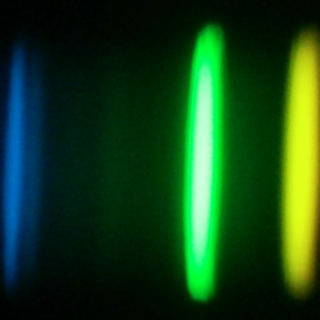Bibcode
Baroch, D.; Giménez, A.; Morales, J. C.; Ribas, I.; Herrero, E.; Perdelwitz, V.; Jordi, C.; Granzer, T.; Allende Prieto, C.
Bibliographical reference
Astronomy and Astrophysics
Advertised on:
9
2022
Journal
Citations
7
Refereed citations
5
Description
Context. Double-lined eclipsing binaries allow the direct determination of masses and radii, which are key for testing stellar models. With the launch of the TESS mission, many well-known eclipsing binaries have been observed at higher photometric precision, permitting the improvement of the absolute dimension determinations.
Aims: Using TESS data and newly obtained spectroscopic observations, we aim to determine the masses and radii of the eccentric eclipsing binary systems V889 Aql and V402 Lac, together with their apsidal motion parameters.
Methods: We simultaneously modelled radial velocity curves and times of eclipse for each target to precisely determine the orbital parameters of the systems, which we used to analyse the light curves and then obtain their absolute dimensions. We compared the obtained values with those predicted by theoretical models.
Results: We determined masses and radii of the components of both systems with relative uncertainties lower than 2%. V889 Aql is composed of two stars with masses 2.17 ± 0.02 M⊙ and 2.13 ± 0.01 M⊙ and radii 1.87 ± 0.04 R⊙ and 1.85 ± 0.04 R⊙. We find conclusive evidence of the presence of a third body orbiting V889 Aql with a period of 67 yr. Based on the detected third light and the absence of signal in the spectra, we suggest that this third body could in turn be a binary composed of two ∼1.4 M⊙ stars. V402 Lac is composed of two stars with masses 2.80 ± 0.05 M⊙ and 2.78 ± 0.05 M⊙ and radii 2.38 ± 0.03 R⊙ and 2.36 ± 0.03 R⊙. The times of minimum light are compatible with the presence of a third body for this system too, although its period is not yet fully sampled. In both cases we have found a good agreement between the observed apsidal motion rates and the model predictions.
Aims: Using TESS data and newly obtained spectroscopic observations, we aim to determine the masses and radii of the eccentric eclipsing binary systems V889 Aql and V402 Lac, together with their apsidal motion parameters.
Methods: We simultaneously modelled radial velocity curves and times of eclipse for each target to precisely determine the orbital parameters of the systems, which we used to analyse the light curves and then obtain their absolute dimensions. We compared the obtained values with those predicted by theoretical models.
Results: We determined masses and radii of the components of both systems with relative uncertainties lower than 2%. V889 Aql is composed of two stars with masses 2.17 ± 0.02 M⊙ and 2.13 ± 0.01 M⊙ and radii 1.87 ± 0.04 R⊙ and 1.85 ± 0.04 R⊙. We find conclusive evidence of the presence of a third body orbiting V889 Aql with a period of 67 yr. Based on the detected third light and the absence of signal in the spectra, we suggest that this third body could in turn be a binary composed of two ∼1.4 M⊙ stars. V402 Lac is composed of two stars with masses 2.80 ± 0.05 M⊙ and 2.78 ± 0.05 M⊙ and radii 2.38 ± 0.03 R⊙ and 2.36 ± 0.03 R⊙. The times of minimum light are compatible with the presence of a third body for this system too, although its period is not yet fully sampled. In both cases we have found a good agreement between the observed apsidal motion rates and the model predictions.
Related projects

Chemical Abundances in Stars
Stellar spectroscopy allows us to determine the properties and chemical compositions of stars. From this information for stars of different ages in the Milky Way, it is possible to reconstruct the chemical evolution of the Galaxy, as well as the origin of the elements heavier than boron, created mainly in stellar interiors. It is also possible to
Carlos
Allende Prieto